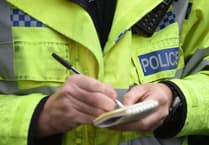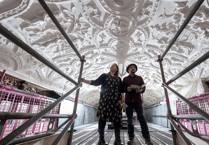THE last bastion of Victorian-era railway operation is set to come to a close on Cornwall’s railways this spring upon the culmination of work to modernise how the railways operate.
It comes as a Cornish signal box which has seen generations of railway men and women pass through its doors is set to close after 144 years in service.
Par signal box, a Victorian-era signal box constructed in 1880 is set to close alongside signal boxes in Lostwithiel and Truro in the spring of 2024.
Its closure comes as part of modernisation work on the ‘Cornish main line’, between Penzance and Liskeard which will see the replacement of manually operated semaphore signals with a digital system operated from a control centre near to Exeter St David’s station in Devon.
In the present system, signallers have to physically pull 51 levers at Truro signal box to change the semaphores and points, in this instance to control the signals on the lines approaching and departing Truro from Chacewater to Probus in addition to the branch line between Truro and Falmouth Docks.
At least two of the signal boxes will be preserved, owing to their Grade II listing. In addition to the Par box, Lostwithiel, built in 1893 is also subject to the listing, which was made in July 2013 after an intervention from the then Culture Secretary, Ed Vaizey, seeking to protect 26 of the rarest signal boxes in the United Kingdom.
The future of Truro signal box, built in 1899, which is not listed, is less certain, although there are no immediate plans to demolish it despite no future plans currently decided once it is decommissioned.
Craig Munday, a mobile operations manager for Network Rail, said: “It’ll be a shame to see it go, but I think we should celebrate it rather than feel downbeat.
“The equipment is old. By and large it works quite well, but Network Rail is finding it increasingly difficult to find spares and find parts to keep it all going. And it’s due an overhaul.”
The number of traditional working signal boxes has been in decline since their peak of between 12,000-13,000 before the start of World War I.
Upon nationalisation after World War II, British Railways inherited about 10,000 signal boxes from the ‘big four’ when it was formed in 1948. At the end of 2019, Network Rail said 86 were still in use.
However, it won’t be a total end for the manual signalling era in Cornwall, with some of the branch lines set to retain their Victorian-era signals.
Some of the Cornish branch lines operate using a variation of a token system, where a train cannot pass without receiving a token representing permission to cross into a section of the railway.
In times past, this would have entailed being handed a token by a signaller, however, post-Beeching rationalisation across the railway saw it replaced by a system where the guard upon the train collects the token from a box after phoning the signaller at the nearest signal box for permission. Upon collection of the token, no other train is permitted to enter the line, operating on a one train in, one train out system.
The guard upon the train is also responsible for the operation of any points on the line. For example, at Coombe Junction on the Liskeard to Looe line, also known as the Looe valley line, the guard exits the train to pull the lever frame.
While a semblance of the times gone past survive in the form of the branch lines, within months the sight of semaphore signals operating on Cornwall’s railways will be a thing of a past, with the exception of heritage railways such as the Bodmin and Wenford steam railway.




